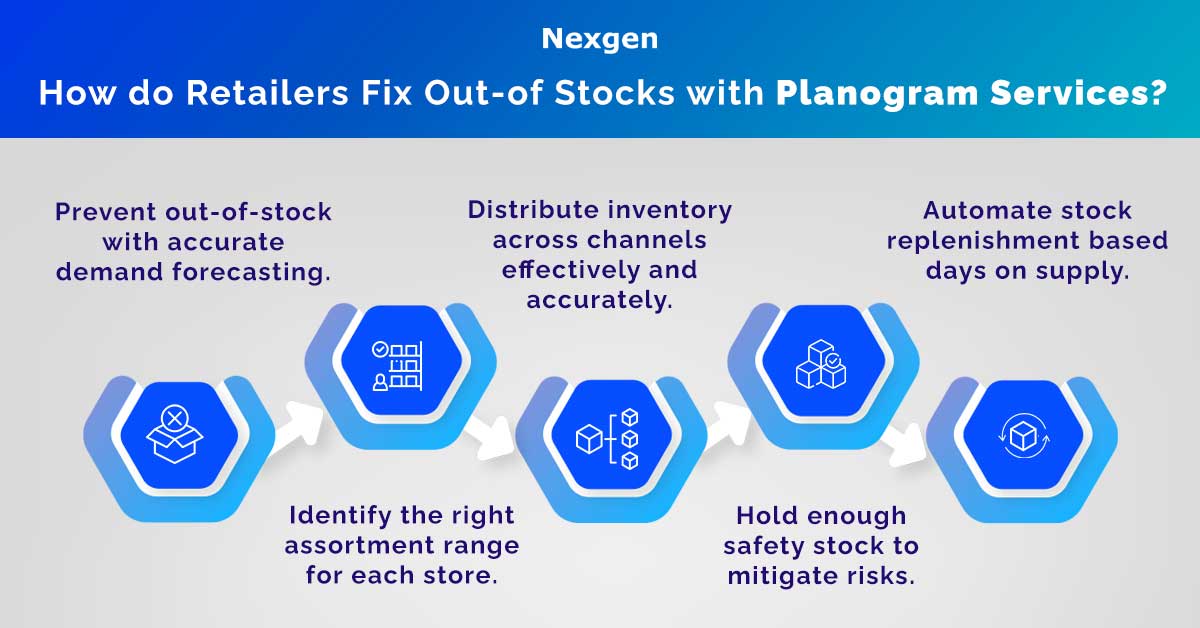Stockouts almost always make it to the “worst nightmare” lists of retailers, and for good reason. Not only do they lead to lost sales, but out-of-stock also results in reduced customer satisfaction and lower loyalty levels. Shoppers often feel let down when you don’t have what they are looking for, and the last thing you want is to disappoint customers. In the long term, out-of-stock could be a serious issue. If you are consistently running out of stock, several things will begin to happen:
·Your profit margins will begin to shrink.
·Your customer reputation will suffer.
· Your competitors will steal your customers.
Because of this, most stores are making every effort to cut down on out-of-stock. This includes implementing a visual merchandising tool such as a planogram. A planogram is an important visual merchandising tool that presents the layout of products throughout a brick-and-mortar store - on shelves and in displays.
Although retailers have been creating and using planograms for many years, they are now turning to third-party planogram services providers, particularly when hundreds of individual store planograms need to be developed and maintained. Leading businesses are already starting to see the benefits of outsourcing planogram creation since it allows them to produce planograms quickly while freeing up their staff to work on more strategic, higher-level analytical tasks.
As such, here are 3 ways retailers can prevent out-of-stock using a planogram.

- Prevent out-of-stock with accurate forecasting When it comes to dealing with out-of-stock situations, prevention is the best medicine. One of the direct consequences of out of stock is lost sales. The best way to avoid stockouts is to anticipate demand for your products. You can avoid out-of-stock if you know how many units of each SKU you need at each store and when you need them. Category management software, such as planogram, is the most accurate and dependable method for preventing stock-outs in modern retailing. Planogram analyses a variety of internal and external variables that influence demand, such as seasonality, promotions, inventory levels, and market trends, to determine the best-selling products in a store.
- Identify and fix a broken assortment The reality is that out-of-stock is actually a symptom of several other problems. For example, your out-of-stock may be indirectly caused by gaps in your product assortment. While retailers may offer a wide range of assortments for any given category, not all products within that assortment will sell in the same quantity. How do you find the perfect balance of assortment to maximize your revenue while reducing the cost of unnecessary SKUs? Accurate data exchange between your inventory, space allocation, and assortment plan is required for efficient assortment planning. Planograms contain precise information on space allocations and days of supply for each product. Data-driven planograms maximize space while executing demand-driven category and assortment management efficiently. When the assortment planning process is finished, you will have a visual representation of your assortment plan that includes new, ongoing, and leftover products that can be assigned to planograms to align with space plans and goals.
- Automate your stock replenishment You still need to worry about replenishment after your inventory has been allocated to stores. This is another area where retailers have issues. Inefficient inventory replenishment is a common source of out-of-stock issues for retailers managing large quantities of products and stores. Even with a good demand forecast and optimized allocation, poor replenishment timing can result in out-of-stocks. Over time, retailers have realized that they can almost eliminate their replenishment issues. Here is how - Based on days of supply and previous sales history, planograms can accurately predict when a product will run out and when new stock needs to be replenished. As a result, retailers can be confident that their shelves are fully stocked and that their customers have a pleasant shopping experience.
Overview of Nexgen Planogram Services
Nexgen offers store-specific planograms for clients that optimize sales and achieve category objectives. We create customized planograms for your business to ensure that these are better aligned with your goals and merchandising strategies. Our expertise in planogram automation helps us build planograms faster, better and consistently. Whether it is creating a planogram from scratch, or a typical reset, we have the knowledge, tools, and experience to get the job done for you.
Get Your Free Trial Now!